To enter Marguerite Humeau’s Orisons (2023), a new land art project in Colorado’s San Luis Valley, visitors pass a disused cattle guard. Rusted-out, wonky-angled, it’s the kind of ghostly relic of the past in which one catches a glimpse of the future. Recognizing it as a readymade, Humeau let it be, installing a simple bench inside it. Consisting of hand-made bricks by the architect Ronald Rael, the bench allows visitors to sit at roughly the height of a cow, paying homage to its past bovine users. But it isn’t, of course, the cow’s perspective that makes the cattle guard interesting; it’s ours, that of a 21st-century human, able to perceive the dark poetry in it, and the sensuous dialectic between nature and the eerie vestiges of an already outmoded human past.
The world’s largest alpine basin – it’s roughly twice the size of Connecticut – the San Luis Valley is suffering from a 2-decade-long megadrought. The 160 acres that constitute Orisons, which opened in late July and was curated by Black Cube Nomadic Art Museum, is owned by an organic farm at the heart of a once-lush community of ranches and farms in which climate change and overdrawn water rights have led to a state of crisis.
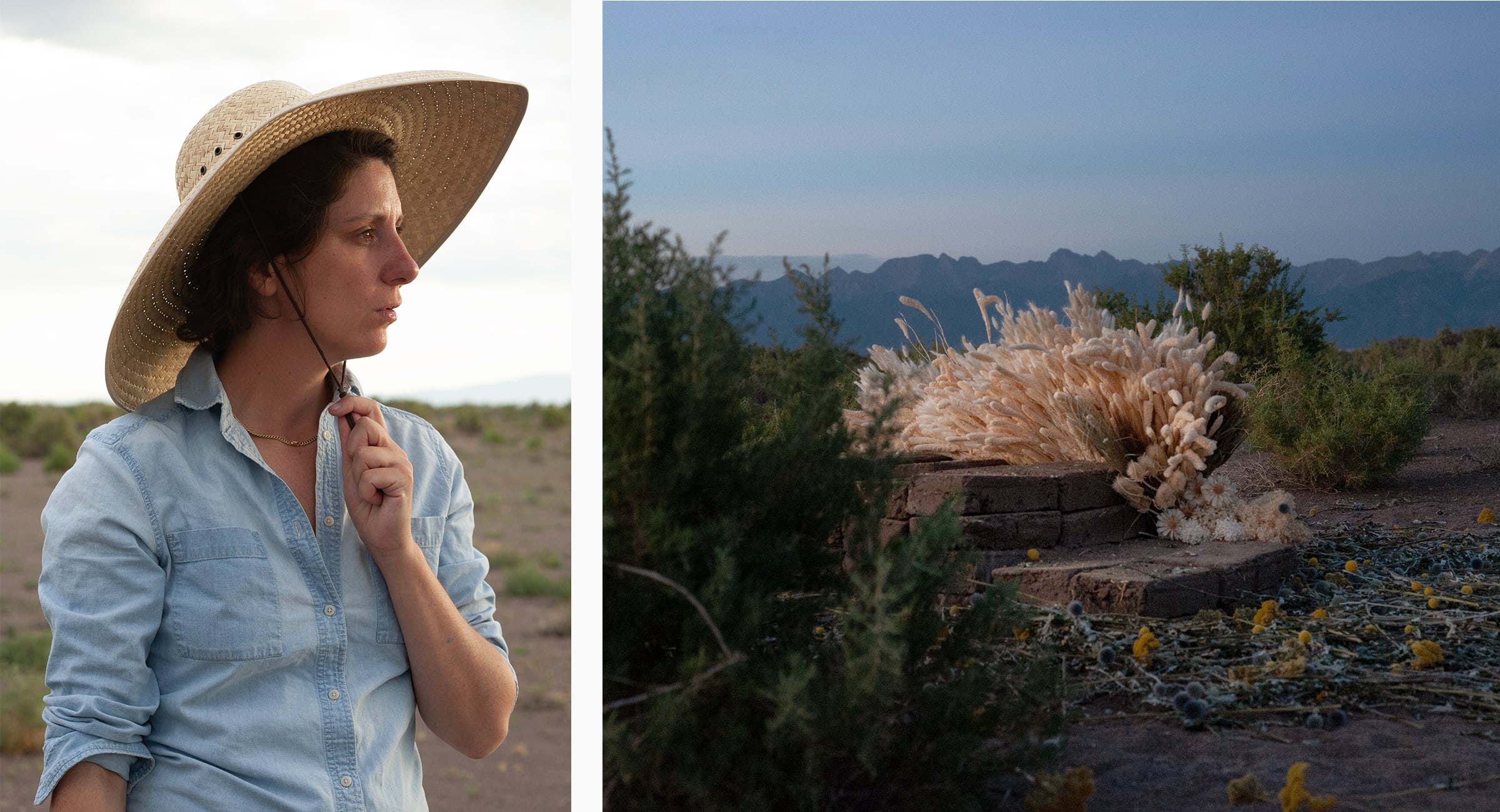
Humeau, a 36-year-old French sculptor based in London whose spring 2023 show at White Cube Bermondsey took inspiration from plant and insect species to envision a speculative future, approached the San Luis Valley site as a kind of portal to the issues of climate change and water rights affecting not only the Mountain West region, but the planet at large. ‘Orisons is about acknowledging that we may not make it as humans in the long term, but if we become connected to, or even part of every other form of life on Earth, it might help us,’ she told me, a few days before the opening.
Land art has always been, to a certain extent, a confrontation with mortality, asking us to contemplate our human minuteness in the larger frame of time and geomorphic processes, which, in the case of the Sangre de Christo Mountains that form the spectacular backdrop to Humeau’s sculptural installations, is nearly 300 million years in its making. But as our sense of the future has darkened, so have our feelings about environmental art.
From a 21st-century perspective, one that’s less and less confident in the planet’s ability to absorb the harm we do to it, grandly iconic works like Robert Smithson’s Spiral Jetty (1970) or Michael Heizer’s City (1972-2022) – not to mention James Turrell’s Roden Crater (1979- ) in Arizona and Charles Ross’s Star Axis (1971- ) in New Mexico, both of which are still under construction – appear very different. Carving up the desert with bulldozers and harnessing vast resources to realize one man’s vision (one that few people can access without CO2-intensive air travel) may seem out of touch with the times to some; to others, such works are violent incursions, insensitive to the environment and ignorant of Indigenous histories. 20th-century conceptual artists who took a subtler approach, emphasizing ephemerality and regeneration – including Ana Mendieta with her ‘Silueta’ series (1973-80) and Agnes Denes with works such as Wheatfield – A Confrontation (1982) and Tree Mountain (1992-96) – have deservedly garnered fresh attention in the last decade. But for young artists coming of age now, the question remains: what do we really want from land art, arguably the most hubristic of art forms?
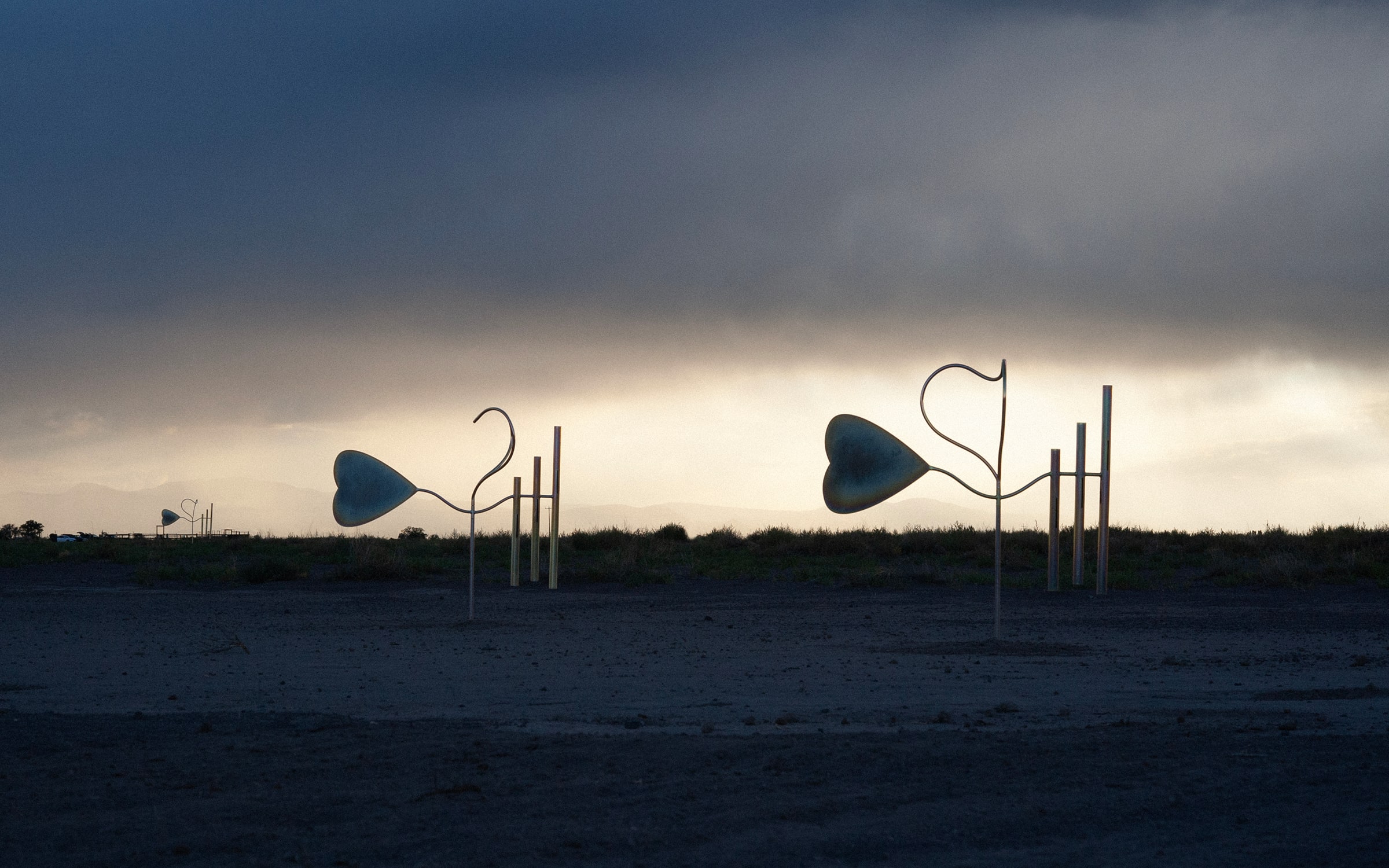
Increasingly, environmental art is less about placing anything on the Earth at all, but instead about problematizing our relationship with it. These kinds of ‘earthworks’ take radically different forms, from Sam Van Aken’s interventions resurrecting pre-industrialization fruit tree species to Forensic Architecture’s high-tech investigations: into petrochemical plants and cancer rates in populations along the Mississippi River; into the relationship between wildfires, land seizures, and the palm oil industry in Indonesia. It includes creative documentations and exhibitions of the impact of local environmental issues – such as Chinese artists’ response to the Three Gorges Dam project – as well as growing institutional recognition of the ecological conscience that was always present in Indigenous art traditions. Allowing the land to speak, and to settle some scores, illuminates a larger fact: that wherever we are on the planet, our future as a species is entangled with the future of the soil, the water, and the political and economic systems we enact. Orisons – meaning prayers, but also a nod to the dramatic, wide-format horizon – is just the latest example of this more research-based, interventionist approach, one that treads very lightly on the land itself.
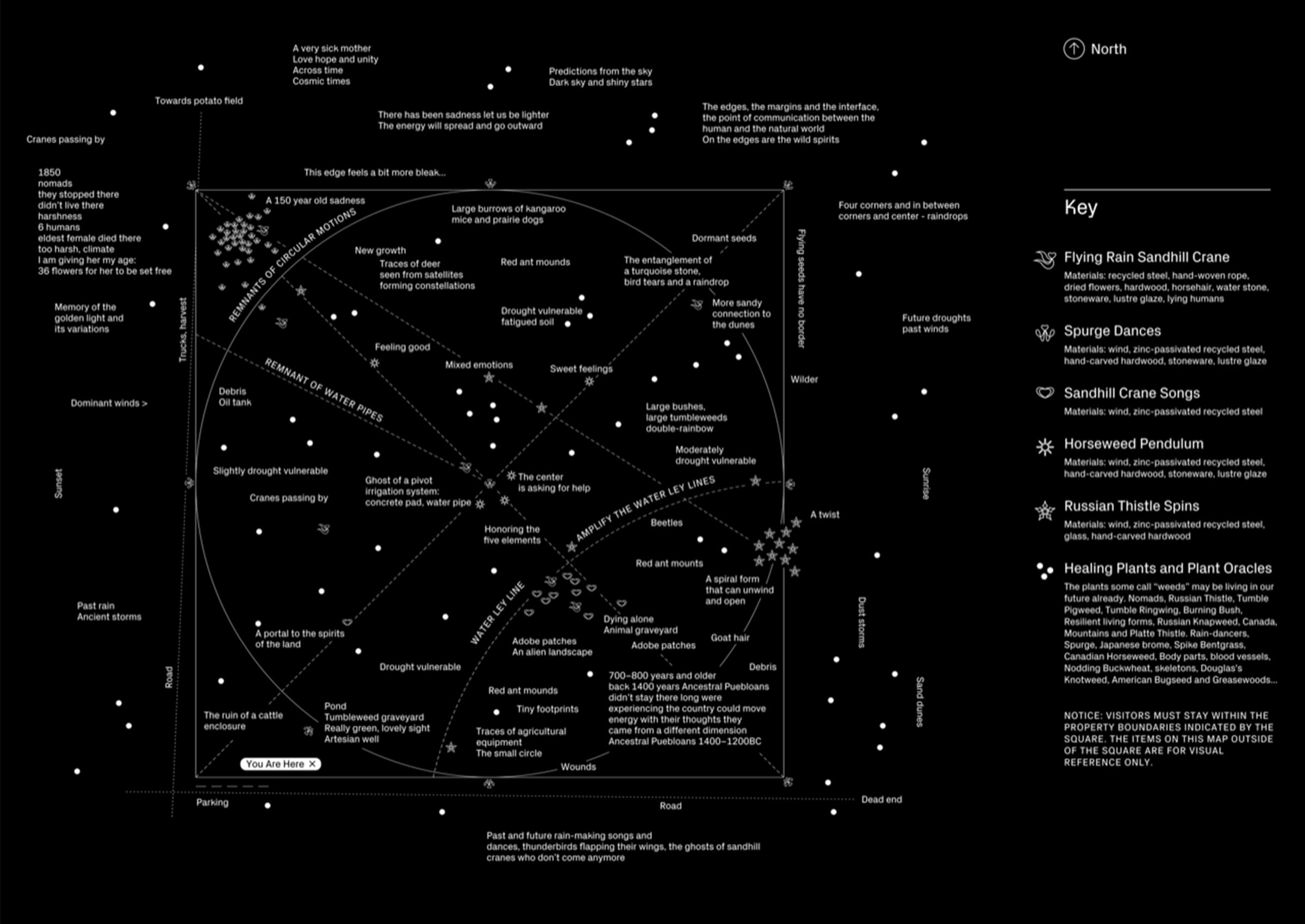
Before beginning work on the project, Humeau consulted with agronomists and specialists in local plants and birds, as well as members of the Ute community, one of the Indigenous groups that has inhabited the San Luis Valley. Reading the landscape much as a palm reader reads a palm, Humeau created a map that charts features of the site, including dried-up irrigation systems, scrappy shrubs, and ancient ghosts detected by a team of clairvoyants. (The map is placed at the entrance as a kind of guide.)
Facing down the usual constraints of budget and time, but also the challenges posed by delicate topsoil, Humeau and her team built several dozen sculptures. The largest of these, made of recycled steel, wood, and rope, references the sandhill crane population that migrates through the area; visitors can recline on the hammock-like wings and contemplate the sky through heart-shaped ceramic elements. Small kinetic sculptures, made of hand-carved wood and intended to evoke divination instruments, are inspired by the shape of local weeds, including Russian thistle and spurge. Another creature-like set of sculptures – made of zinc-passivated steel, with flutes cleverly inserted in them – whistle hauntingly in the constant wind. That sound, less like a bird call than like a cry from the land itself, is the closest Orisons gets to evoking the total mood of the derelict cattle guard.
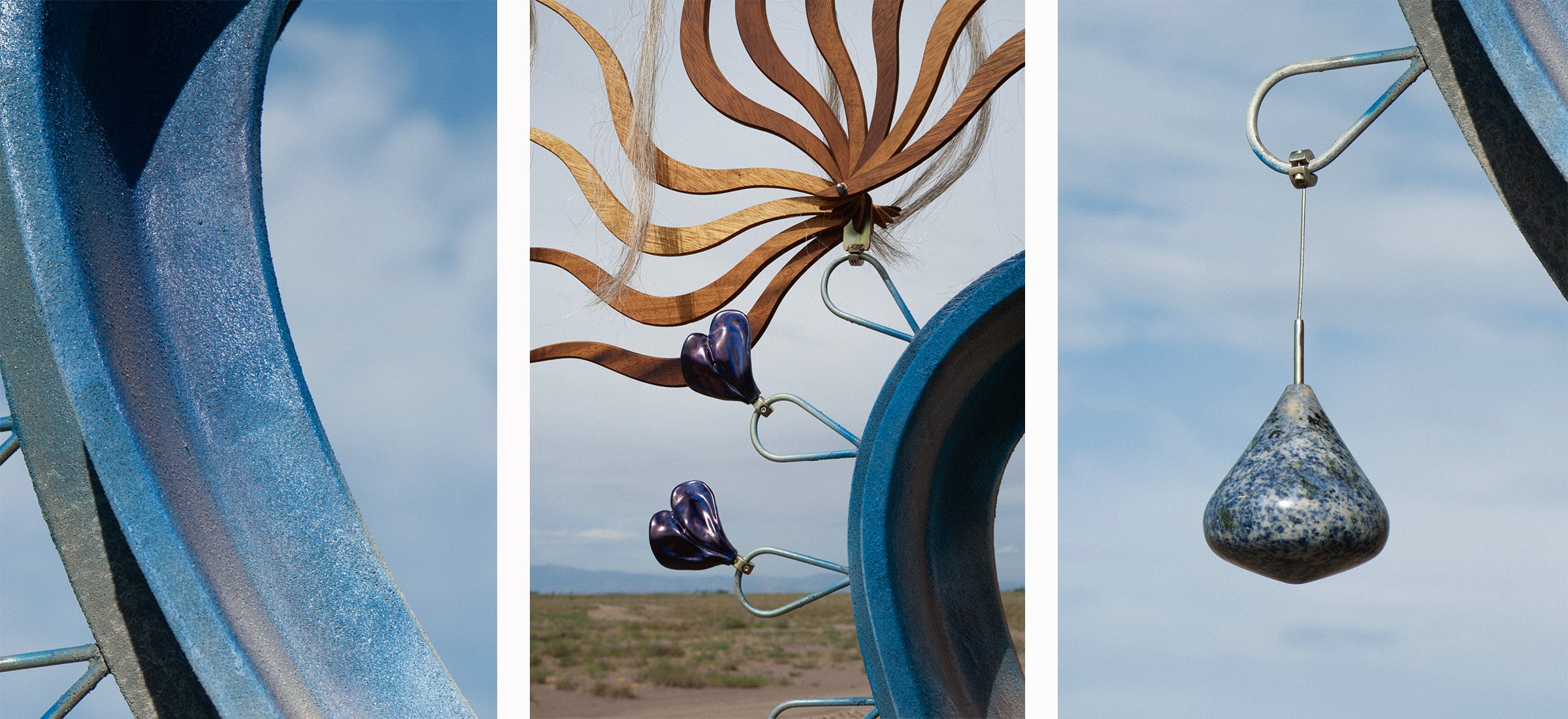
Humeau’s deliberately humble visuals can’t compete with the grandeur of the surroundings (though this gifted young artist surely would have gotten closer, given more time). She can and does, however, ask us to honor the ground on which we stand and bring our attention to its particularity and history, as well as the tenacious and perhaps oracular presence of its existing life forms. This isn’t a facile endeavor. Humeau wants us to feel what it means to identify with and yield to the larger whole we’re all part of; to recognize our deeper interconnectedness, and to accept that there are other, more ancient ways of knowing and perceiving beyond the egocentric blip of human cognition.
Gingerly walking the sandy, uneven terrain, pocked by weeds and the tunnels of kangaroo rats, searching for mirage-like art objects rising out of the sand, I thought of the 1971 Nicholas Roeg film Walkabout, in which a brother and sister lost in the Australian outback are saved by an Aboriginal boy who shows them how to draw water from a dried-up oasis. Stumbling about the strange netherworld we occupy as a species on the cusp of existence, we seek answers – in technology, in conspiracy theories, in allegories of art – but rarely listen to the answers offered by those who already live in symbiosis with the Earth. In these desperate times, it isn’t difficult to imagine a planet without us on it; it’s much harder to imagine one in which we’ve ceded our ways of being – and our lifestyles and profit margins – in favor of a more modest and sustainable engagement with it. The future of land art shouldn’t be about finding cool new ways to enact our (always illusory) dominion over nature, but rather about something far more radical: submitting to it, and to the life and processes that will, anyway, survive us.
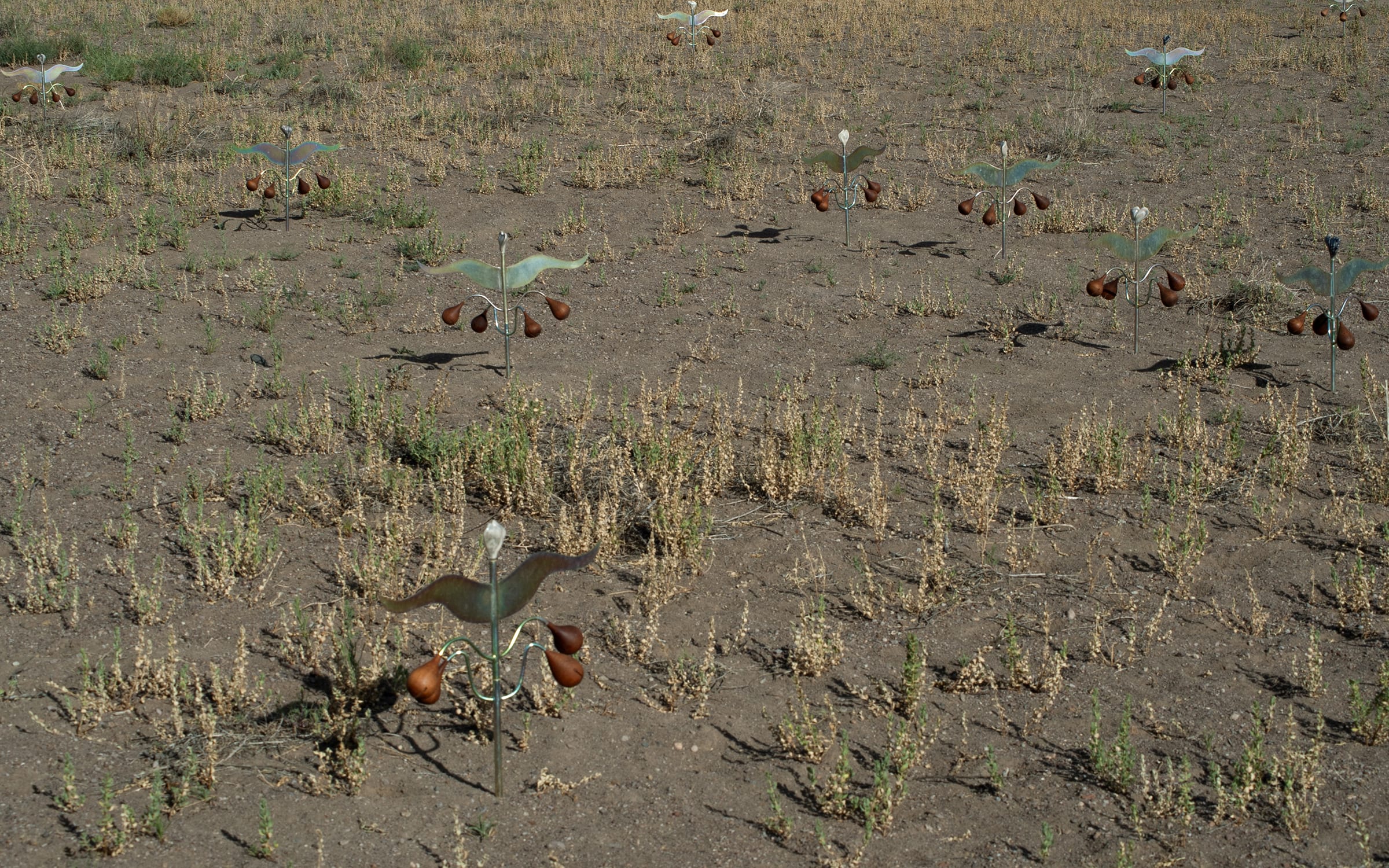
Marguerite Humeau is represented by White Cube (London, Hong Kong, New York, West Palm Beach, and Paris) and C L E A R I N G (New York, Brussels, and Los Angeles).
Megan O’Grady is a critic, essayist, and an Assistant Professor of Critical and Curatorial Studies at the University of Colorado, Boulder. A frequent contributor to The New York Times, where she created the Culture Therapist column, her work also appears in The New Yorker and Vogue. Her book, How It Feels to Be Alive: What Art Tells Us About Ourselves, forthcoming from FSG, is an inquiry into the way we live in books and art, their influence on our self-conception and the way we move in the world.
Orisons is on view in Hooper, Colorado, until June 30, 2025. Reservation Required.
Published on August 8, 2023.
Caption for full-bleed images: Orisons by Marguerite Humeau, 2023. Photographs by Julia Andréone and Florine Bonaventure. Courtesy of the artist and Black Cube Nomadic Art Museum.